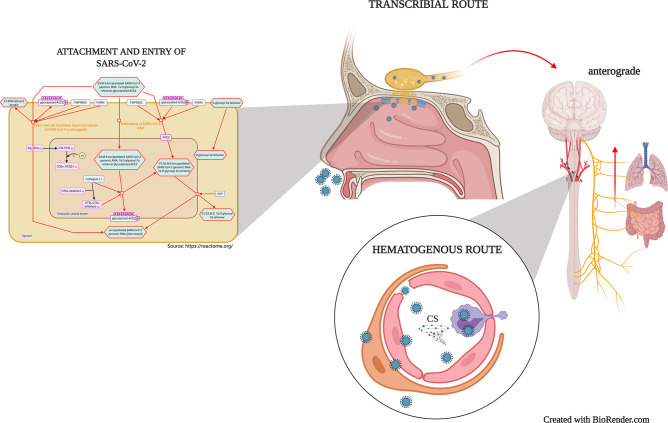Figure 1.
Mechanisms of virion attachment/infection and possibles routes of SARS-CoV-2 neuroinvasiveness. SARS-CoV-2 spike protein interaction with the ACE-2 receptor may promote a direct host cell membrane fusion and the virion nucleocapsid release or induce a Furin/TMPRSS2-mediated endocytosis. Once in the epithelial cells, SARS-CoV-2 spreads to CNS through peripheral neurons in the olfactory epithelium and the second-order neurons along the olfactory nerve (Transcribial route). Similarly, the virus may use different peripheral nerves such as the vagus nerve, which afferences from the lungs and gut reach the brainstem. In the hematogenous route, the viremia induces the infection and viral transcytosis across vascular endothelial cells, as well as leukocytes infection and mobilization towards the BBB, and in several cases, the BBB disruption. CS, Cytokine storm.

